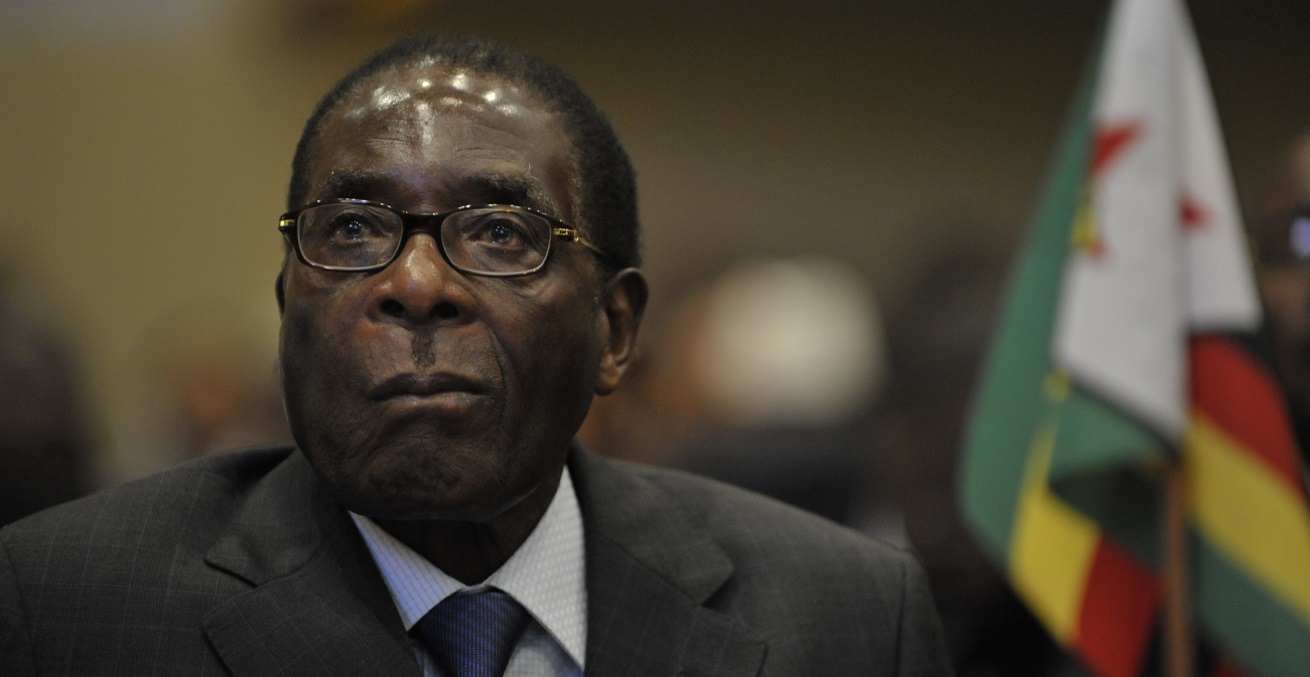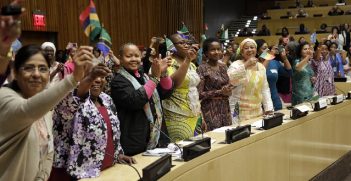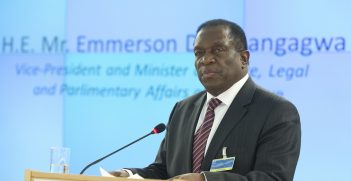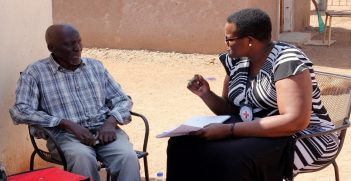Mugabe Leaves Zimbabwe with a Complicated Legacy

In the wake of Robert Mugabe’s reluctant relinquishment of power this week celebrations have erupted in the streets of Harare. However, while he may no longer be in control, will his legacy endure?
Nearly 85 per cent of Zimbabweans are about to have a wholly new experience: living in a country where Robert Mugabe is not running the government. With his resignationon on Tuesday—coming after he was ousted from his ZANU-PF political party and the legislature began impeachment proceedings against him—Mugabe’s 37-year reign in Zimbabwe has come to an end.
Mugabe’s departure leaves a complicated legacy. At this juncture, it can be hard to understand how and why Mugabe managed to retain power for so long. As late as 2015, more than 60 per cent of Zimbabweans said that they trusted Mugabe and a plurality (38 per cent) said that they would vote for ZANU-PF in the 2018 elections. At the same time, under Mugabe’s watch, the country has experienced hyperinflation, employment rates have plummeted and the agricultural sector that once sustained the economy collapsed due to farm seizures and drought. Top officials within the Zimbabwean government—including Mugabe himself—are subject to international sanctions.
Why does Mugabe retain support, even to this day? In part, his stature derives from Zimbabwe’s historical experience. Mugabe led the efforts to bring about majority rule in Zimbabwe. After Rhodesia unilaterally declared independence from the United Kingdom in 1965, the liberation struggle—also known as the Second Chimurenga—kicked into high gear. Mugabe rose through the ranks to eventually head both the political and military organisations that fought for majority rule, and he won a decisive victory in the first elections in 1980. For these reasons, many saw Mugabe as the father of the country or Zimbabwe’s George Washington. He was also the last of the liberation fighters still in power in Africa, giving him special prominence (and, significantly, deference from other African governments that might otherwise be inclined to criticise his actions). These historical experiences are powerful, especially among older generations.
Mugabe’s leadership efforts also generated international support which further cemented his domestic legacy. Previously derided as a Marxist revolutionary, Mugabe won over many Western leaders during the Lancaster House Conference in 1979 when he toned down his political rhetoric. He pledged to support political and civil rights, offered protections for the White minority population, and promised to share power with his political rivals. Leaders like Margaret Thatcher came to see Mugabe as an ally against potential Soviet encroachment in southern Africa.
His governance in Zimbabwe comes with a darker side too. Despite his initial pledge to work with his political rivals, Mugabe oversaw a campaign of terror known as the Gukurahundi. In the 1980s, Mugabe created the Fifth Brigade: a group of soldiers trained by North Korea that cracked down on perceived dissent in Matabeleland by supporters of the rival ZAPU party. In 1983 and 1984, the Gukurahundi massacres carried out by the Fifth Brigade (and allegedly overseen by Emmerson Mnangagwa, the man whose firing earlier this month started the recent chain of events in Zimbabwe) killed more than 20,000 members of the Ndebele ethnic group. Though he has never accepted responsibility for it, archival evidence shows that Mugabe played a significant role in overseeing the massacre.
Furthermore, despite his democratic pledges, Mugabe repeatedly undermined political and civil rights. In the wake of Zimbabwe’s economic collapse, ZANU-PF and Mugabe passed new legislation that allowed police to ban political gatherings and prosecute people for criticising the government. While Zimbabwe routinely held elections, international observers repeatedly described them as neither free nor fair. During the 2008 elections, when the opposition Movement for Democratic Change won the first round of presidential voting and a majority in the National Assembly, Mugabe encouraged violent attacks against the opposition.
The economic effects of Mugabe’s rule continue to have an effect on Zimbabwe. A country that once was a major agricultural exporter now has to import food to feed its population. Despite being rich in diamonds, platinum and gold, Zimbabwe’s treasury has seen little revenue from mining due to corruption and theft by government officials. Banks limit withdrawals to $100 per week because the government’s efforts to introduce a new currency have undermined confidence in the economy and scared off foreign investment. The health and education sectors, which were once among the best performing in the region, have severely contracted because of a lack of government funding.
Mugabe’s resignation brought about massive celebrations in the streets of Harare and other cities around the country, but his departure won’t solve the problems Zimbabwe faces. Emmerson Mnangagwa is not known for his adherence to democratic principles and some fear that his rule will be worse than Mugabe’s. Indeed, one of the striking elements of the political turmoil in Zimbabwe over the past two weeks is how little the general population has been involved. Mugabe’s troubles did not come about because of popular protest; they began when the military stepped in to protect Mnangagwa. Rather than being the result of general involvement in the political process, these conflicts have largely been within the ruling party. How and whether opposition political parties will participate (and whether the opposition can unify around a single party or platform) remains to be seen.
As Chipo Dendere described the situation on The Gist podcast earlier this week, Zimbabwe is like a house with a sturdy foundation but with a crumbling interior due to neglect. With Mugabe no longer in power, the question now is whether Zimbabweans will have access to the tools needed to rebuild the house and make it the pride of the neighbourhood again.
Dr Jeremy Youde is a fellow and senior lecturer at the Australia National University’s College of Asia and the Pacific.
This article is published under a Creative Commons Licence and may be republished with attribution.





